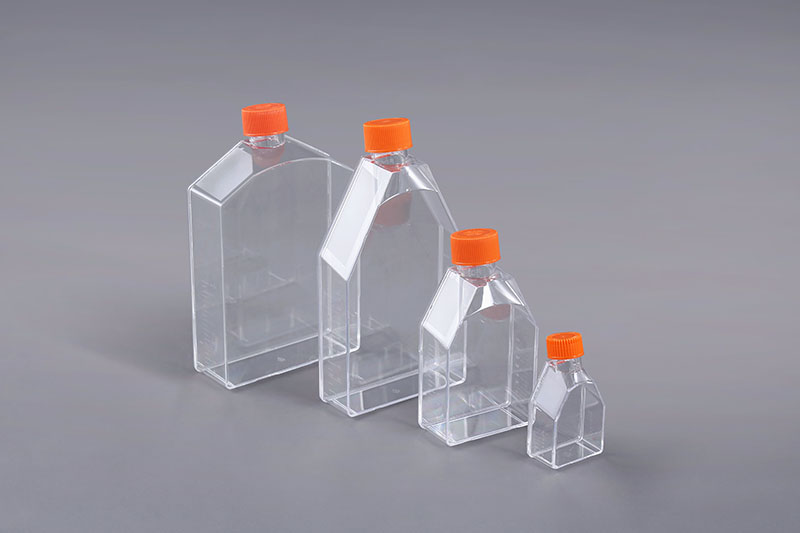Bacteria Lysogenica bacteria referunt quae prophages in chromosomata sua integrata habent et crescere et effingere possunt sine lysed normaliter. Bacteriophagi mites late usi sunt in agris translationis, machinationis geneticae vectoris, et biologiae hypotheticae. ___@ ad reprimendam lysogenicity bacteria adhiberi potest. Methodus specificae operationis haec est: 1. Cultura bactriae lysogenicae: Inoculata E. coli 225 (λ) ab LB clivo reducitur in 250ml culturam cellularum lagenae continentem solutionem culturae 20ml LB, culturam quatiens 30°C per 16 horas, et deinde 2ml bacterial suspensionem ab ea et accipe alteri coniunge In 250ml Erlenmeyer ampulla continens 20 ml iusoris LB, culturam quatiens 37°C pro 2h ad Phase logarithmica. cellam culturam vas
2. Excludit phage liberum: Si Bacillus labor probandus est, fieri potest in suspensionem sporis, et deinde ad 80°C tractata per 10 minuta phage, quae in superficie bacteria lysogenici adsorbetur et libera potest; si labor probandus est non Bacillus , Usus antiserum praeparatum ex phage vel 0,2% sodium solutionis citratae ad lavandum tempus lysogen cellulae logatae ad removendum adsorbum et phage superficiei liberam. Post centrifugationem ad 4000r/min pro 10 minuta, supernatans cum sensitivo indicator bacteria adiici potest pro bracteae duplicatae determinationis, quae adhibetur ad temptare liberam phage sample et phage quae bacteria lysogenicam adsorbet. Phage post centrifugam Cellae inducuntur.
3. Inductio bacteria lysogenic: bacteria collecta post centrifugationem bis lavatur in salinis sterilibus normalibus, et facta in ultima intentione 1011 cellularum/ml cum saline normali vel 100mmol/l Tris-HCL quiddam (pH7.0) Pro bacteria suspensione, adde Suspensionis bacterial 5ml unicuique patellae, irradiata cum lampade 30W UV ad distantiam 30cm pro 30*, statim adde 5ml solutionis culturae duplicatae LB, misce bene et incubare in obscuro ad 37°C pro 2h.
4. Inspectio modorum lysogenicorum: Operate secundum methodum duplicatum agaro, paucas guttas chloroformi supra lysate inductae, et cum 10plica dilutionis methodo apte dilute. Post tres dilutiones deligendo, sume 0.3ml pro unaquaque dilutione. Misce bene cum 0.2ml periodo logarithmica sensitiva E. coli 226 bacteria suspensionis, adde medium LB medium corpus liquatum et refrigeratum ad 45°C, statim misce, et in medium laminam solidam LB effunde. Post concretionem, 37 Incubare pro 6h et observa. Si plures tabulae excultae apparent in lamina, probat probatum cantilenam esse lysogenam.
Ad inspiciendam num bacteria lysogenicity sequere superiora vestigia. Attende sterilitatem processus in operatione ad vitandum operationem impropriam, quae experimentum consequitur.
To check whether the bacteria have lysogenicity, follow the above steps. Pay attention to the sterility of the process during operation to avoid improper operation that affects the test results.
The FAI climbed 5.9 percent year-on-year in the first 11 months of 2018, quickening from the 5.7-percent growth in Jan-Oct, the National Bureau of Statistics (NBS) said Friday in an online statement.
The key indicator of investment, dubbed a major growth driver, hit the bottom in August and has since started to rebound steadily.
In the face of emerging economic challenges home and abroad, China has stepped up efforts to stabilize investment, in particular rolling out measures to motivate private investors and channel funds into infrastructure.
Friday's data showed private investment, accounting for more than 60 percent of the total FAI, expanded by a brisk 8.7 percent.
NBS spokesperson Mao Shengyong said funds into weak economic links registered rapid increases as investment in environmental protection and agriculture jumped 42 percent and 12.5 percent respectively, much faster than the average.
In breakdown, investment in high-tech and equipment manufacturing remained vigorous with 16.1-percent and 11.6-percent increases respectively in the first 11 months. Infrastructure investment gained 3.7 percent, staying flat. Investment in property development rose 9.7 percent, also unchanged.
 English
English



















































